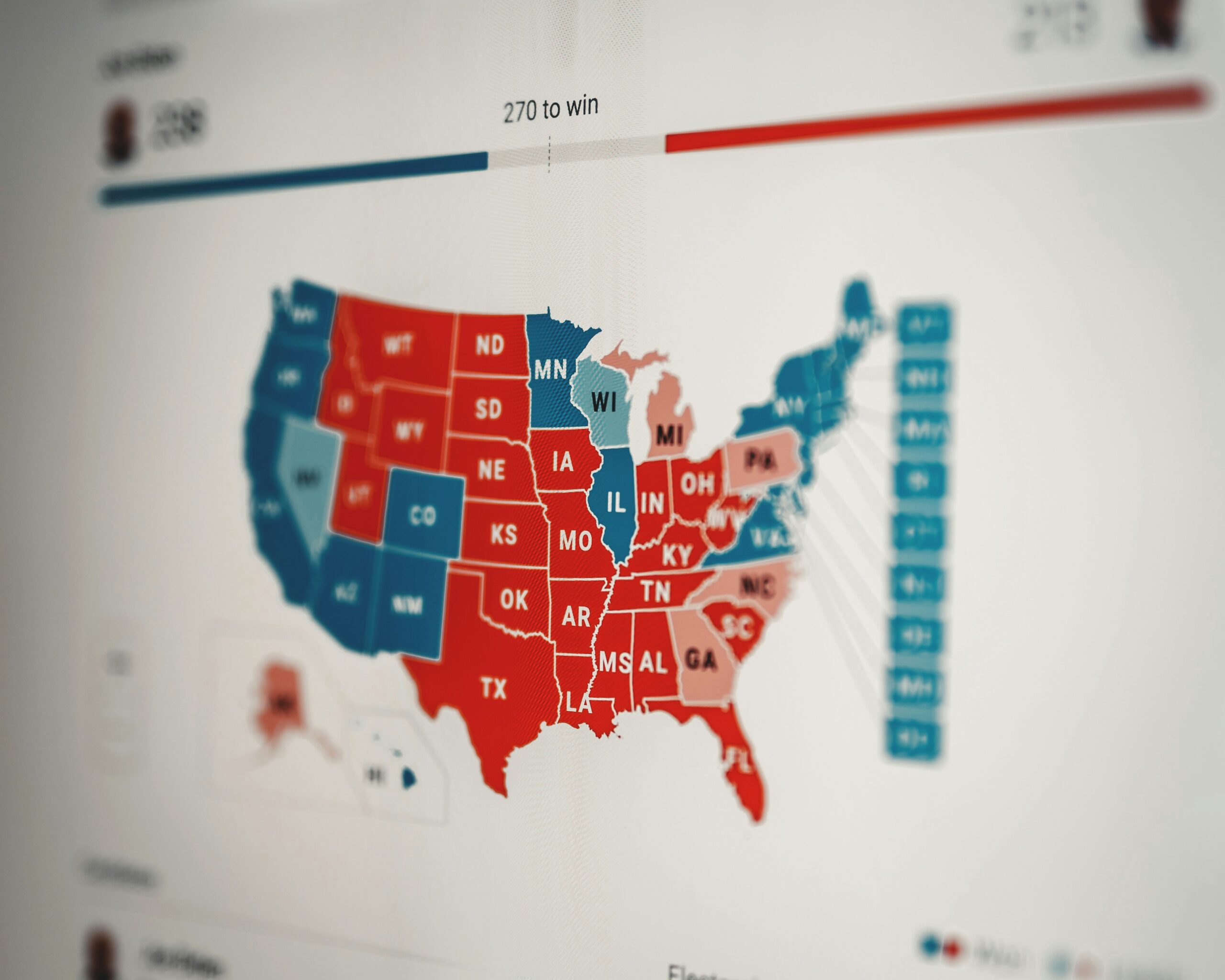Introduction to Delhi Assembly Elections
The Delhi Assembly elections, held every five years, play a crucial role in shaping the political landscape of India. As a Union Territory, Delhi has its distinct legislative framework which governs various aspects of governance and administration. The elections serve as a platform for citizens to choose representatives who will formulate policies and laws that directly impact their lives. Understanding the significance of these elections is essential to comprehend the larger narrative of democratic governance in the country.
The structure of the Delhi Assembly is quite unique. It consists of 70 elected members, with the Chief Minister being the head of the government. These elected representatives are responsible for various portfolios, encompassing areas such as education, health, transport, and more. The Assembly’s decisions play a significant role in addressing local issues and implementing developmental agendas. The recent shifts in political dynamics, particularly in the 2020 elections, have shown a growing interest in local governance, which will likely resonate in the upcoming 2025 elections.
The electoral process in Delhi follows standard practices laid out by the Election Commission of India. Voters aged 18 and above are eligible to cast their ballots, and the elections are conducted through a secret ballot system. Major political parties, including the Aam Aadmi Party (AAP), Bharatiya Janata Party (BJP), and Indian National Congress (INC), typically dominate the electoral landscape, showcasing the competitive spirit of these elections. Additionally, independent candidates also participate, adding to the diversity of choices available to voters. As we approach the 2025 Delhi Assembly elections, the political environment and voter sentiment will continue to evolve, making this an exciting time for political discourse and electoral engagement in the capital city.
Historical Context: Voting Trends in Delhi
The voting trends in Delhi have evolved significantly over the years, reflecting socio-political changes and demographic shifts. Historical data indicates that voter turnout in Delhi varies across elections, influenced by various factors, including the political landscape, voter engagement initiatives, and demographic changes. In the early years post-independence, voter turnout was relatively modest, with percentages often remaining below 50%. This trend was characterized by limited political participation, as many citizens were newly enfranchised and unfamiliar with the electoral process.
However, as time progressed, there was a marked increase in political awareness and engagement. Key elections in the late 20th century, particularly the 1998 Delhi Assembly Elections where the voter turnout rose to nearly 55%, signified a turning point. This rise was attributable to the increasing involvement of civil society organizations, which undertook extensive campaigns to educate voters about their rights and the importance of participation. Additionally, demographic factors, such as the influx of migrants from other states for education and employment, began to significantly alter the electorate’s composition and preferences.
The most noteworthy trend emerged during the 2015 Assembly Elections, where a historic turnout of 67% was recorded. This remarkable figure was influenced by several factors, such as a high level of political polarization and a concerted effort by political parties to mobilize young voters. Furthermore, the impact of issues such as corruption, governance, and local development resonated with the electorate, prompting higher participation rates across different demographics.
As we move toward the 2025 Delhi Assembly Elections, analyzing these historical voting trends will provide valuable insights into potential shifts in voter behavior. Understanding past patterns will be crucial for both political entities and analysts attempting to forecast the outcome of future elections in this dynamic urban landscape.
Key Dates and Timeline for the 2025 Elections
As the political landscape of Delhi gears up for the 2025 Assembly elections, understanding the key dates and timeline is essential for voters and political stakeholders alike. The election process is carefully structured to ensure transparency and efficiency, allowing a fair chance for all participating parties. The Election Commission of India (ECI) will officially announce the election schedule, which marks the beginning of the electoral process.
The most significant date to note is the polling day, which is expected to be set for late February or early March 2025, based on historical trends of the previous elections. On this day, registered voters will head to polling booths across the National Capital Territory to cast their votes. The specific date will be crucial as it will determine the campaign strategies adopted by political parties.
Moreover, an essential period leading up to the elections is the nomination phase, where candidates must submit their nomination papers. This phase typically occurs around three weeks before the polling date. Following this, the process of campaigning intensifies, allowing candidates to present their manifestos and engage with the electorate.
Once the voting concludes, there will be a brief interval before the announcement of results, which is scheduled for approximately one week after polling day. The results will provide insight into the electorate’s sentiments and preferences, significantly influencing the direction of governance for the next five years.
In addition to these key dates, stakeholders should be aware of the various deadlines associated with campaigning, such as the cessation of electioneering activities, which usually occurs 48 hours before the polling begins. This timeline serves as a roadmap for all involved, ensuring that they are well-prepared for the upcoming electoral challenge.
Understanding the Exit Polls for the 2025 Elections
Exit polls serve as a critical tool in the realm of electoral politics, providing insights into the voting behavior of constituents immediately after they leave polling stations. As the 2025 Delhi Assembly Elections approach, understanding the significance of these polls becomes paramount. Exit polls are conducted by various organizations and often involve sampling a fraction of voters to estimate the likelihood of different candidates securing victory. This methodology allows for the real-time analysis of public sentiment, shedding light on the factors that influence voter decisions.
The importance of exit polls lies not only in their predictive capabilities but also in their potential to shape public perception. As results are released, they can create a narrative that influences voter morale, party strategies, and even political discourse. For instance, favorable exit poll predictions for a particular party may bolster its campaign efforts, while less favorable projections could trigger immediate strategic shifts. Consequently, the implications of exit polls extend beyond mere predictions; they can alter the electoral landscape considerably.
In terms of expectations for the 2025 Delhi Assembly Elections, analysts are keenly observing voting trends, including issues such as welfare programs, employment opportunities, and governance performance. As various demographic elements are accounted for in polling methodologies, exit polls can reflect shifts in voter allegiance and sentiment towards key political parties in Delhi. However, while exit polls can provide a snapshot of current political dynamics, it is crucial to approach their findings with a degree of caution, as they are not definitive outcomes. The evolving nature of public opinion will undoubtedly play a significant role as election day approaches.
Voter Registration and Participation
Voter registration is a crucial step in ensuring that citizens can exercise their democratic rights effectively, particularly in the context of the upcoming 2025 Delhi Assembly Elections. The Election Commission of Delhi provides a systematic process for individuals to register as voters, which can be completed online. To begin with, prospective voters must visit the official website of the Election Commission, where they can find the application form for voter registration. This form can be filled out digitally, making the process convenient and accessible.
After submitting the necessary details, individuals can download their Voter ID cards from the same platform. The Voter ID serves as a vital identification document during elections, confirming one’s eligibility to vote. It is important for voters to ensure that their details are accurately reflected on their Voter ID, as discrepancies may lead to complications on election day.
In addition to registering, citizens can check if their names are listed on the electoral roll by accessing the voter list available on the Election Commission’s website. This feature allows individuals to verify their voting status, enabling them to take any corrective actions if necessary. Furthermore, the Commission often conducts awareness campaigns to educate citizens about the importance of participation in the electoral process and the steps required to ensure they are part of it.
Engagement in the electoral process is vital for a thriving democracy. Every vote counts, and active participation not only emphasizes the significance of individual opinions but also fosters a sense of community responsibility. Therefore, it is highly encouraged for all eligible voters in Delhi to take proactive measures in registering, checking their voter status, and ultimately, making their voices heard during the elections. This collective participation enhances the democratic fabric of the nation and drives the electoral agenda towards addressing the concerns and aspirations of the citizenry.
Voting Mechanics: Time and Procedure
The voting process in Delhi is a crucial aspect of the democratic framework, especially as the 2025 Delhi Assembly Elections approach. Understanding the mechanics of voting ensures that every voter can participate effectively and make their voice heard. Voting in Delhi typically takes place from 8:00 AM to 6:00 PM, providing a substantial window for citizens to cast their votes. It is essential for voters to plan their visit accordingly, as reaching the polling booth during peak hours may lead to longer waiting times.
On the day of voting, individuals are required to carry a valid photo identification document, such as an Aadhaar card, voter ID card, or any government-issued ID. Upon arrival at the polling booth, voters will encounter a streamlined process designed to ensure security and efficiency. Voters will first need to provide their identification to the election officials, who will ascertain their eligibility based on the electoral rolls. Following verification, individuals will be given a ballot paper or directed to an electronic voting machine (EVM), depending on the process in use for that election.
To further facilitate a smooth voting experience, it is advisable for first-time voters to familiarize themselves with the voting procedure in advance. Local electoral offices often conduct awareness campaigns and workshops. They provide comprehensive information on how to navigate the voting process, including instructions on how to operate the EVM. Additionally, voters should verify their names on the electoral roll prior to election day to avoid any last-minute issues. Beyond the mechanical aspects of voting, creating an environment conducive to decision-making is vital, so voters should engage in discussions and consider the candidates and issues at hand well ahead of voting day.
Political Landscape: Key Players and Their Strategies
The 2025 Delhi Assembly elections will witness a dynamic political landscape, with multiple parties vying for dominance. Among the primary contenders, the Bharatiya Janata Party (BJP) and the Aam Aadmi Party (AAP) are anticipated to play pivotal roles. Both parties have had significant influence over Delhi’s political terrain, employing distinct strategies tailored to their respective constituencies.
The BJP seeks to retain its hold by emphasizing development and security. Building on its past performances in the central and municipal elections, the party has aimed to consolidate its voter base by highlighting infrastructural projects, governance efficacy, and law enforcement measures. The BJP’s campaign narrative often focuses on nationalism and urban development, leveraging these themes to appeal to a broader demographic. The party is expected to deploy high-profile leaders and extensive campaign machinery to maximize outreach across the national capital, appealing to issues that resonate with middle-class and business-centric voters.
On the other hand, the AAP will strive to showcase its governance model. With a foundational focus on education, healthcare, and public utilities, AAP’s strategies are likely to revolve around its achievements during its tenure. The party is determined to leverage social welfare schemes and grassroots initiatives, aiming to connect with the electorate on a personal level. Additionally, the AAP may highlight its commitment to combating corruption and ensuring transparency as a means to differentiate itself from traditional parties.
Other political entities, such as the Congress and emerging regional parties, might also impact the electoral outcomes. These parties could appeal to specific voter segments, particularly those dissatisfied with the mainstream options. The political discourse during the campaign cycle will largely center around critical issues such as unemployment, inflation, and public service delivery. As the 2025 Delhi Assembly elections approach, the strategies of these key players will evolve, reflecting the changing sentiments and priorities of the electorate.
Impact of Delhi Election Results on National Politics
The results of the Delhi Assembly elections hold significant implications for national politics in India. With Delhi serving as a political microcosm, the outcomes can reverberate throughout the country’s political landscape. Parties perform their best and worst in Delhi, often reflecting their popularity and strategy on a broader scale. A victory in Delhi can bolster a party’s image nationally, while a loss may compel a reassessment of political strategies and priorities.
One of the most prominent ways in which the Delhi election results impact national politics is through the shaping of alliances. Political parties often reposition themselves based on electoral outcomes, leading to the formation of coalitions or the reevaluation of existing ones. For instance, a party’s strong performance may incentivize potential allies to form strategic partnerships, thereby enhancing their political leverage at the national level. Conversely, poor results could lead to fragmentation, prompting parties to rethink their alliances, which can destabilize established political narratives.
Moreover, the Delhi elections often set the stage for the national discourse leading up to general elections. The issues that resonate with voters in Delhi can influence policy-making and political agendas across India. For example, if health and education emerge as key issues in the Delhi elections, other states may see similar topics gaining national attention, impacting legislative priorities. This cascading effect can drive political parties to recalibrate their focus to align with voter sentiments, potentially altering the course of national governance.
In conclusion, the outcomes of the Delhi Assembly elections are more than just a reflection of local political dynamics; they are pivotal in reshaping national political strategies and dialogues. As such, stakeholders across the spectrum will closely monitor these elections, aware that their repercussions may influence party alignments, policy decisions, and ultimately, the fabric of Indian governance.
Conclusion and Call to Action
The 2025 Delhi Assembly Elections present a critical moment for the democratic engagement of citizens. Throughout this guide, we have explored various facets of the electoral process, including the importance of voter participation, the significance of understanding party manifestos, and the impact of local issues on electoral outcomes. As the elections draw near, it becomes increasingly vital for voters to remain informed about the candidates and their positions on crucial topics affecting the community.
Active participation in the voting process is not merely a right but a responsibility of every citizen. Engaging in discussions about local politics, attending community meetings, and following reliable news sources can significantly enhance voter awareness. Knowledge is power, and informed voters are better equipped to make choices that reflect their values and the needs of their communities. As the 2025 elections approach, consider taking the initiative to learn about the electoral candidates and their respective platforms.
Furthermore, we encourage readers to involve themselves in local political discourse. Social media platforms and community forums provide ample opportunities for citizens to share their perspectives and engage with others. By fostering conversations centered around the upcoming elections, voters can help create an atmosphere of engagement that encourages higher turnout and comprehensive discourse around important issues. Participating in local governance discussions not only enriches the democratic process but also enhances personal understanding of the political landscape.
In conclusion, the 2025 Delhi Assembly Elections offer an opportunity to shape the future of the region. By staying informed, participating actively, and engaging with fellow voters, citizens can ensure their voices are heard and contribute to a robust democratic process. Let us all commit to making our votes count and fostering a vibrant political culture in Delhi as we move forward towards the elections.



